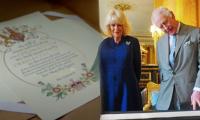Had the duration been extended a little bit more for the event, the lecture on the history of the Ghazal singing in Pakistan by music director Arshad Mahmud and sitar player Ustad Nafees Khan at the Mohatta Palace might not have appeared that short of comprehensiveness as it did appear on Friday evening.
Nevertheless, it was a treat to listen to Mahmud and Khan, both of whom spent several years together at the National Academy of Performing Arts and collaborated for several music projects, including their current venture Mousici.
Mahmud told the audience that Khan’s family followed the Gayeki Baaj (singing style) of the sitar tradition, which focused on incorporating the elements of vocal classical singing in playing sitar. Hence, he had to learn singing for many years so that he could induce the elements of vocal tradition in his instrumental music.\
Khan who was sitting with the harmonium, not only participated in the discussion on Ghazal singing with Mahmud, but also sang several Ghazal couplets to explain the point being made in the lecture. To the delight of the audience, he also played some Ghazals sung by maestros.
Mahmud said Ghazal is the most popular form of poetry in Urdu and it also became extremely popular as a music form after the advent of radio. He explained that earlier Ghazal singing was restricted to the aristocrats who would have courtesans singing the poetic form. However, when radio came, Ghazals were composed and sung for the public.
The event was told that due to its aristocratic roots, the initial form of Ghazal singing used to be in Mujra Ang. There were special fast pieces of tabla in the interludes so that Kathak dancers could dance to their beat. When the Ghazal composition started for radio, such musical format continued.
To explain this point, the lecturers played Ustad Barkat Ali Khan, the brother of the legendary Khayal singer Bade Ghulam Ali Khan, who is also a legend in his own right being one of the pioneers of Ghazal singing by men. The Ghazal that was played was Ghalib’s ‘Aah Ko Chahiye Ik Umr Asar Hone Tak’.
The lecturers said the particular style was called Mujra Ang because it had pieces for dance; however, the singing style of Ghazal in that era was similar to that of Thumri – a genre of classical music that focuses on lighter and shorter embellishments with more emphasis on lyrics in comparison to the more serious genre of Khayal where lyrics are totally subservient to the raag.
It was said that this style of Thumri was carried on in the Ghazal singing of legends like Mehdi Hassan and Iqbal Bano. The audience was delighted when Mehdi’s rendition of Hafeez Hoshiarpuri’s ‘Muhabbat Karne Wale Kam Na Honge’ and Bano’s rendition of Ghalib’s ‘Muddat Hui Hai Yaar Ko Mehmaan Kiye Hue’ were played. Khan explained how Mehdi sang ‘Zamane Bhar Ke Gham’ part of Hoshiarpuri’s Ghazal in so many different ways from descending from higher octave to ascending from lower notes.
To this, Mahmud added that since each couplet of Ghazal was an independent entity whose meaning was self-contained, it was easier to compose Ghazal than Nazm because the latter had a continuity and the composition could not linger on one line or phrase for too long as that would likely make the meaning obscure because the listener may get disconnected from what had earlier been rendered.
However, in case of Ghazal, he said, a singer could spend much time repeating some phrase or line as Mehdi often did because the entire meaning was contained in just two lines.
To further explain his point, Mahmud used the example of Bano’s rendition of ‘Muddat Hui…’. He said that being a trained singer, Bano could improvise as much as she liked while singing that Ghazal but she would not choose to improvise while singing the famous Nazm ‘Dasht-e-Tanhai Mein Ae Jaan-e-Jahan Larzan Hai’ by Faiz because lingering too much on one line would harm the generation of the poem’s meaning in the mind of the listeners.
From the Thumri style of singing, the experts came to the era when music composers tried to compose Ghazal in pure Raags without compromising on the rules of classical music. He gave the example of Aal-e-Raza’s Ghazal ‘Jo Chahte Ho So Kehte Ho Chup Rehne Ki Lazzat Kia Jano’ sung by Mehdi in a rarely heard raag Nat Bhairov or Daagh’s Ghazal ‘Ranj Ki Jab Guftugu Hone Lagi’ rendered by Ghulam Ali in Raag Bhopali.
On this point, Khan said it was necessary to mention Farida Khanum’s Ghazal singing style, which he said was heavily influenced by Khayal singing. He said Khanum often sang an Alaap before poetry in rendering a Ghazal that had prolonged embellishments and it seemed she had started singing a Khayal.
After this, the speakers had to wind up due to shortage of time. Hurriedly, Khan mentioned Amanat Ali Khan and sang Ada Jafri’s ‘Honton Pe Kabhi’ sung by the Patiala maestro under Khalil Ahmed’s composition.
Perhaps Noor Jehan does not lie in the cadre of Mehdi, Bano and Khanum when it comes to Ghazal singing and that was why the lecturers had not mentioned her, but the moderator, Hameed Haroon, intervened to make sure that some Ghazal rendered by Noor Jehan was also sung.
In the end, Khan remarked that due to shortage of time, he could not discuss the Qawwali style of Ghazal singing and how Ghazal singing changed when Ghazal was used as songs in films.
As the lecture was about the history of Ghazal singing in Pakistan, a lot was not covered. There was no mention of male singers that sang with a higher pitch like Habib Wali Muhammad and M Kaleem. There was also no mention of the generation of singers that emerged in the 70s and afterwards who sang beautiful Ghazals in a lighter less-classical form such as Nayyara Noor, Tahira Syed, Tina Sani and Mehnaz. Then many pop singers of Pakistan have also sung memorable Ghazals.
Besides, only a few composers such as Niaz Hussain Shami and Khalil Ahmed were mentioned. The composer is more important than a singer and although the public may not know the names of composers like Pandit Ghulam Qadir, Ustad Nazar Hussain, Nisar Bazmi, etc., they must be mentioned in any lecture on the Ghazal singing.







